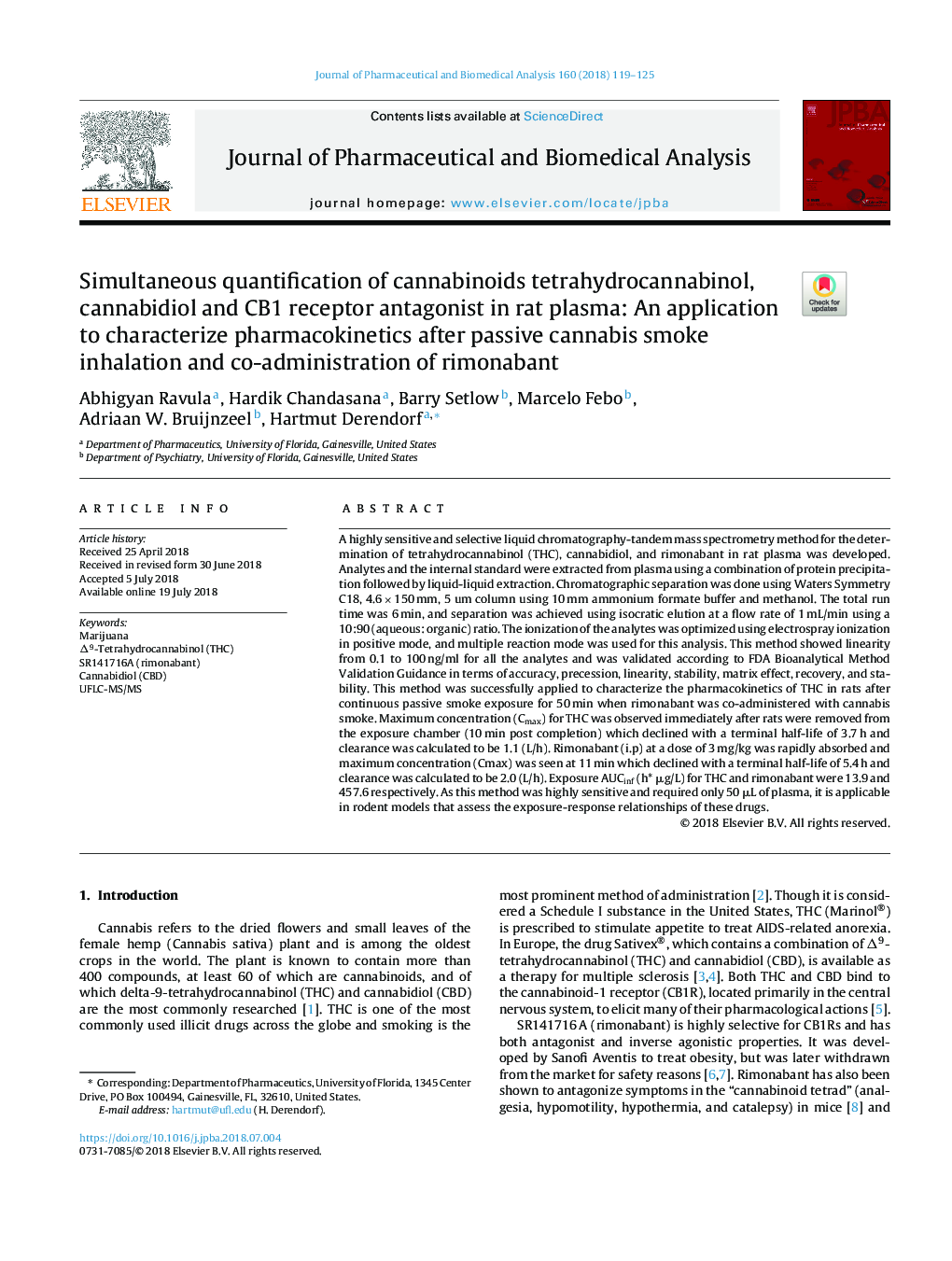| Article ID | Journal | Published Year | Pages | File Type |
|---|---|---|---|---|
| 7625727 | Journal of Pharmaceutical and Biomedical Analysis | 2018 | 7 Pages |
Abstract
A highly sensitive and selective liquid chromatography-tandem mass spectrometry method for the determination of tetrahydrocannabinol (THC), cannabidiol, and rimonabant in rat plasma was developed. Analytes and the internal standard were extracted from plasma using a combination of protein precipitation followed by liquid-liquid extraction. Chromatographic separation was done using Waters Symmetry C18, 4.6âÃâ150âmm, 5 um column using 10âmm ammonium formate buffer and methanol. The total run time was 6âmin, and separation was achieved using isocratic elution at a flow rate of 1âmL/min using a 10:90 (aqueous: organic) ratio. The ionization of the analytes was optimized using electrospray ionization in positive mode, and multiple reaction mode was used for this analysis. This method showed linearity from 0.1 to 100âng/ml for all the analytes and was validated according to FDA Bioanalytical Method Validation Guidance in terms of accuracy, precession, linearity, stability, matrix effect, recovery, and stability. This method was successfully applied to characterize the pharmacokinetics of THC in rats after continuous passive smoke exposure for 50âmin when rimonabant was co-administered with cannabis smoke. Maximum concentration (Cmax) for THC was observed immediately after rats were removed from the exposure chamber (10âmin post completion) which declined with a terminal half-life of 3.7âh and clearance was calculated to be 1.1 (L/h). Rimonabant (i.p) at a dose of 3âmg/kg was rapidly absorbed and maximum concentration (Cmax) was seen at 11âmin which declined with a terminal half-life of 5.4âh and clearance was calculated to be 2.0 (L/h). Exposure AUCinf (h* μg/L) for THC and rimonabant were 13.9 and 457.6 respectively. As this method was highly sensitive and required only 50âμL of plasma, it is applicable in rodent models that assess the exposure-response relationships of these drugs.
Related Topics
Physical Sciences and Engineering
Chemistry
Analytical Chemistry
Authors
Abhigyan Ravula, Hardik Chandasana, Barry Setlow, Marcelo Febo, Adriaan W. Bruijnzeel, Hartmut Derendorf,
